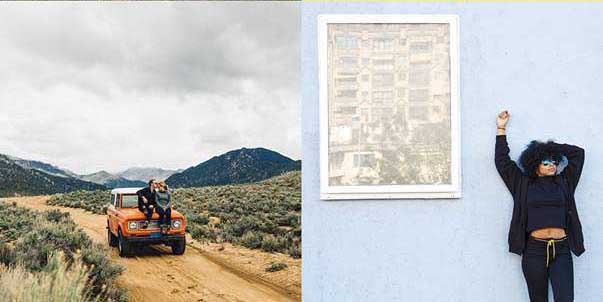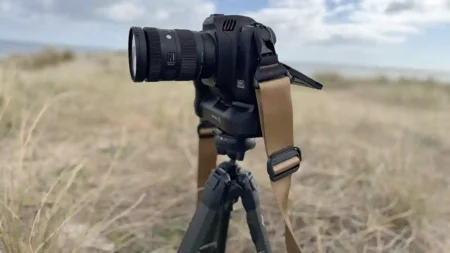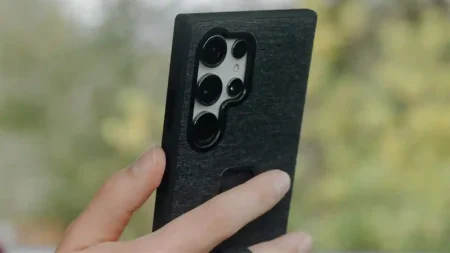Professional photographers and other creative professionals not only need to understand the design trend of the moment, but also need to look ahead to what’s coming around the corner. In this fascinating guest blog post, Adobe Stock shares its photo trends for 2017 and other visual trend predictions for the year ahead, which the company says can be broken down into several themes…
Our Relationship With Technology
2017 is the year that machine learning comes to life with innovative tools built to bolster the creative process. Technology brings new perspectives with aerial photography guided by drones and 3D tools for a look at every angle.
Finally, perhaps in response to an overly industrialised world, we’ll see the popularity of more delicate art, and — ironically — the digital tools used to create it.
2017 photo trends: 01 Machine learning comes to life
“Think of self-driving cars and VR,” says Worldwide Adobe Evangelist Paul Trani. “The possibilities that come with these new technologies are endless.”
While we can’t predict whether a bot will take over our jobs, we can look at technology as a partner helps us overcome our fears, and our struggles in development and creative endeavours.
New technological advancements are being used for creative purposes, including making it easier for you to find the right visual image as you search on Adobe Stock, as well as auto keywording to help designers find the art you submit to Stock.
2017 photo trends: 02 View from above
Aerial photography has reached new heights since the invention and popularisation of drones. We can now produce images from viewpoints that were never before possible. This year, we’ll take a look at how this new perspective affects our creative output, explore controversies and see what direction technology will go next.
2017 photo trends: 03 3D
3D tools and design applications are growing and innovative tools are simplifying how it’s used. Adobe’s Project Felix is expanding the number of designers familiar with 3D by using technology to simplify the creative process.
With 3D art coming of age, designers will be looking for images to support their creations.
2017 photo trends: 04 Digital art gets delicate
In an ever-industrialized and technology-focused world, it’s natural to respond with a gravitation toward handicraft. Ironically, the delicate nature of this trend is enabled by the very thing it is responding to — technology. Tablets and responsive pens allowing artists to create ever more realistic, delicate, and detailed art.
This year, we expect to see a more astute eye for detail in digital artistry, mimicking the work of reality, such as brush strokes and textures, while paying the utmost attention to minute details.
Paul also anticipates that low fi hand lettering and drawing will trend as a response to the popularity of crisp digital and type overlays.
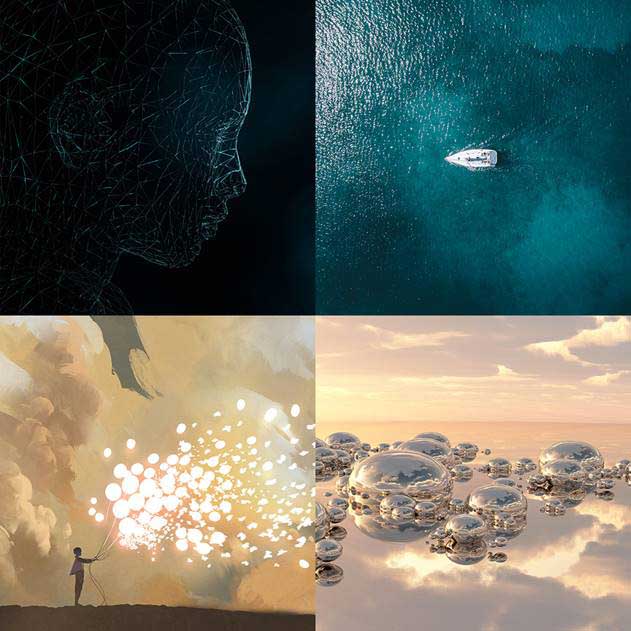
Emotive Communication and the Search for Meaning
“For a trend to be successful, it has to be palatable enough to connect with the public as a whole, while standing out as a new concept entirely,” Paul explains.
Designers and consumers alike are quickly realising that good art does more than help people find answers or take action. It pushes the envelope, provokes emotion, and excites.
We’ll see images designed to narrate a full story and photography that refines how it blends with video. The exploration of meaning will also extend to questioning boundaries and investigating perspectives.
A rise in unbalanced compositions will compel viewers to see beyond the norm. And shining a spotlight on female creators and subjects will highlight gender roles and diversity for completely new perspectives in 2017.
2017 photo trends: 05 Once upon a time
In 2017, the narrative of a single image or 6-second video has the same need to tell a story as long-form content — and that narrative must resonate with viewers and provoke emotion. Visuals that speak to the correct audience, and choose the right tone and setting will be most successful.
Also, look for stories that are told through a variety of methods: a beginning, middle, and end combined in a single view, or instead, one element in focus with room for the viewer to interpret what happened before or what will happen next.
2017 photo trends: 06 Caught in limbo
“As a designer we have two choices when it comes to design trends,” Paul explained, “either make a living riding out the current wave, or look at the evolution of trends and starting the wave ourselves.”
Boomerangs and Cinemagraphs are a relatively new medium that converges photos and video by creating perfect loops, capturing a moment in time. We anticipate that this blending of media will lead to content creators experimenting and pushing boundaries of their craft
2017 photo trends: 07 Unbalanced composition
Urging the viewer to see beyond the norm, compositions aim to show people, objects, and situations in a new perspective.
Whether it’s the actual composition of an image itself, how it was shot, the angle and placement of the subject, or the subject itself being portrayed in an unusual, mind-boggling setting.
Think of Cindy Sherman’s unsettling portraiture that manipulated classic positions and perceptions to create a distorted image.
2017 photo trends: 08 Female creators
We look forward to celebrating women and their creativity, notable figures in the creative field who are pioneers of their time, as well as contemporaries who are ever expanding their influence. This trend brings gender roles and diversity to the forefront for a more balanced perspective.
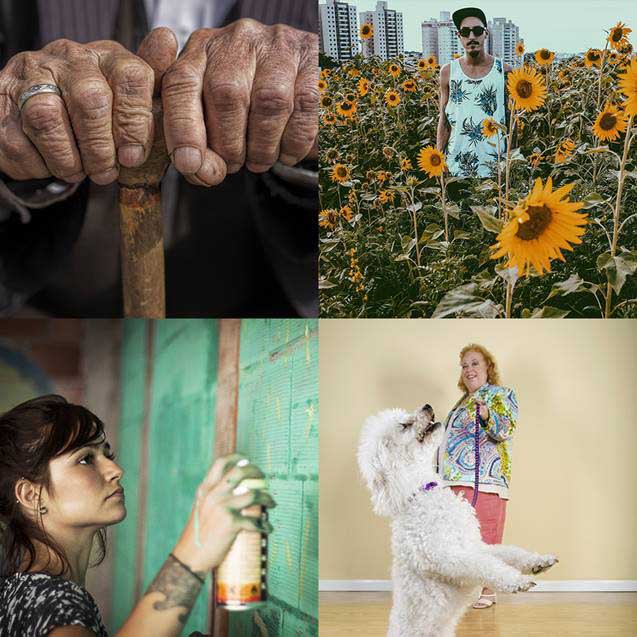
A Desire for Simplicity
2016 was a year filled with digital chaos, distraction, and uncertainty. This year, the world is ready for simplicity and truth. In art, that translates to getting back to nature and considering how we relate to the Earth.
Function will be popularised over form and this simplicity paves the way for minimalist design that adheres to the “less is more” concept.
Maximise white space and layout that’s simple, clean, and authentic. Additionally, editorial photography will highlight realities that appeal to modern consumers and design teams who want to embrace clarity and transparency. Clean, functional, and unfiltered materials lead the pursuit of the ordinary.
2017 photo trends: 09 No man is an island
This trend draws inspiration from natural forces and explores mankind’s relationship to all of Earth’s organisms.
As we recognise our comparative helplessness against the forces of nature, we wonder how nature, space, and solitude impact creative work.
We’ll look at notable examples of creatives taking inspiration from the vastness and rawness of nature.
2017 photo trends: 10 Purpose over beauty
Function is winning out over form when both together are not in reach. A lack of content can no longer be disguised by pretty packaging — it first needs substance and weight.
Social media has given a voice to everyone and celebrities recognise that people are expecting more than their faces emblazoned on selfies — we want their intelligent support for social issues too.
A nod to Vogue, known for its reporting on fashion and beauty, for weighing in this past November on politics — a new direction full of relevance to its female audience.
2017 photo trends: 11 Minimalism
Gone are the days of extravagance. With so much of the world in flux, we return to basics and focus on only the truly necessary. Anti-luxury, natural beauty, and a return to the idea that less is more.
2017 photo trends: 12 Documentary reality
Dealing with the reality of military, social, cultural and political conflicts in the world, whimsy is fading and the rose-tinted lenses — Pantone’s Color of the Year 2016 — are out. Brutal, abrupt, less comforting — but truthful — images are in.
Photography will highlight the power of the authentic image, as seen in distressing scenes of migrants attempting the journey to Europe and the devastation of Aleppo. They may be excruciatingly graphic and cause inner pain, but they awaken the world to emotions that otherwise may remain buried.
With new tools, new expectations, and a new sense of purpose, designers will have more freedom and flexibility to be original, striking connections with audiences based on authenticity and emotion.
With diversity as a backdrop, storytelling and personality will become more valuable than ever — and that’s great news for consumers and creatives.
